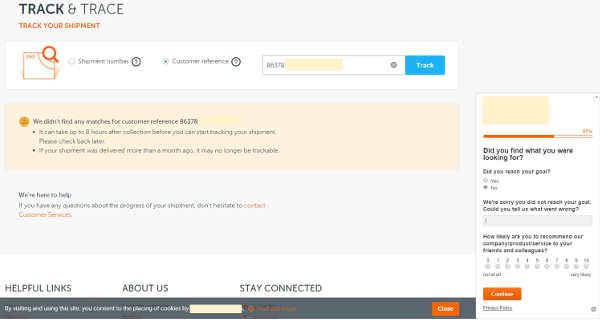How to Ask for Customer Feedback
In my last blog post “Shouldn’t customer experience measurement lead to insight and action?“, I highlighted three bugbears that I have with some customer experience programmes…
1. Are questions simply measurement for measurement’s sake?
What action can you take with the information gathered?
2. Timing and appropriateness
Are you asking questions at an appropriate time, that are relevant, and do they make sense? Could they annoy the customer and do more harm than good?
3. What value is derived?
How will the feedback impact customer experience? How is it going to improve your profitability?
In this post we will discuss the second topic, that of ‘how to ask for customer feedback appropriately’.
What makes for a bad customer feedback interaction?
Customer interactions can range from fantastic, to acceptable but nothing great and, finally, quite damaging. It’s important to remember that even gathering customer experience feedback is an experience in its own right. And, in light of that, anything that:
- Annoys a customer because it’s asked too frequently
- Makes your brand look incompetent
- Annoys a customer because of the timing
- Asks irrelevant questions to the experience they’ve just had
- Raises questions over the sincerity of gathering feedback
can be genuinely harmful and damaging to your brand.
How not to ask for customer feedback
To illustrate my point, I’ve picked an example of a recent customer experience touchpoint my colleague had with a well-known courier company that, to me, doesn’t work. In fact, it actually has the potential to annoy the customer, thus not enhancing the brand experience.
My colleague had a parcel which was due to be delivered:
- He was notified by email that his parcel was in transit and could be tracked online, thus he logged on.
- To his surprise the screen basically told him that the shipment couldn’t be found, perhaps try later!
- To add insult to injury he was served an online satisfaction survey asking whether he would recommend the company.

There are three key issues here:
Poor syncing of services
Firstly, he was in a position of relative satisfaction at been informed the parcel is on its way. Only to immediately question this, when the online system wasn’t in-sync with the email notification system.
Inappropriate questions
Just because someone visits a specific page of a website, doesn’t mean they are ready to provide feedback.
Thus, asking someone if they would recommend the company whilst still in the middle of a process is possibly not the most appropriate. Perhaps something relating to whether they were able to do what they wanted to, or find what they needed, would have been more appropriate. However, this is a common pitfall brands fall into.
Poor timing
This links into the point above – but is slightly different. You can ask perfectly good questions but do it at the wrong time and you risk annoying your customers.
In this case, asking whether you’d recommend the company is an OK enough question. But to ask it at the wrong time can have the opposite effect. Surely something that would be much more appropriate would be to ask once the package has been delivered or when the experience has come to a close?
What makes for a good customer feedback interaction?
Well obviously, the key take-home is to improve processes so that the situation described cannot happen in the first place.
But more importantly from a customer experience programme perspective:
Ask for feedback at the right time….
Make sure any feedback request is appropriate for the situation and being asked at the right time. It is this lack of detail that is one of my big bugbears on some customer experience programmes.
Remember feedback is an experience in itself
Every feedback request is an opportunity to gather information but also an opportunity to annoy if you don’t think it through or implement the right business rules. It should match your underlying brad values – after all it is another customer touchpoint.
Take care in designing your feedback processes
I totally accept that it is difficult to cover every situation perfectly.
In my humble opinion however, greater care is needed when designing a customer experience programme. With the programme being an extension of the brand’s values, it needs to reflect positively.
Match your brands promise and your customers’ expectation
A customer’s experience needs to match to your promise and their expectation. And we, as an industry, need to pull our socks up at certain times and accept that we aren’t always thinking things through well enough.
And, above all test all the processes, as if you were the customer, and if it annoys you, it will annoy them!
How to run a successful customer experience programme
As a guide we’ve produced the following free guide, Promises, expectation and how to avoid the CX Gap. In it we take a simple and practical look at the key elements of an effective customer experience programme and how to maximise the return on investment.
Alternatively, check out our Customer experience management services.